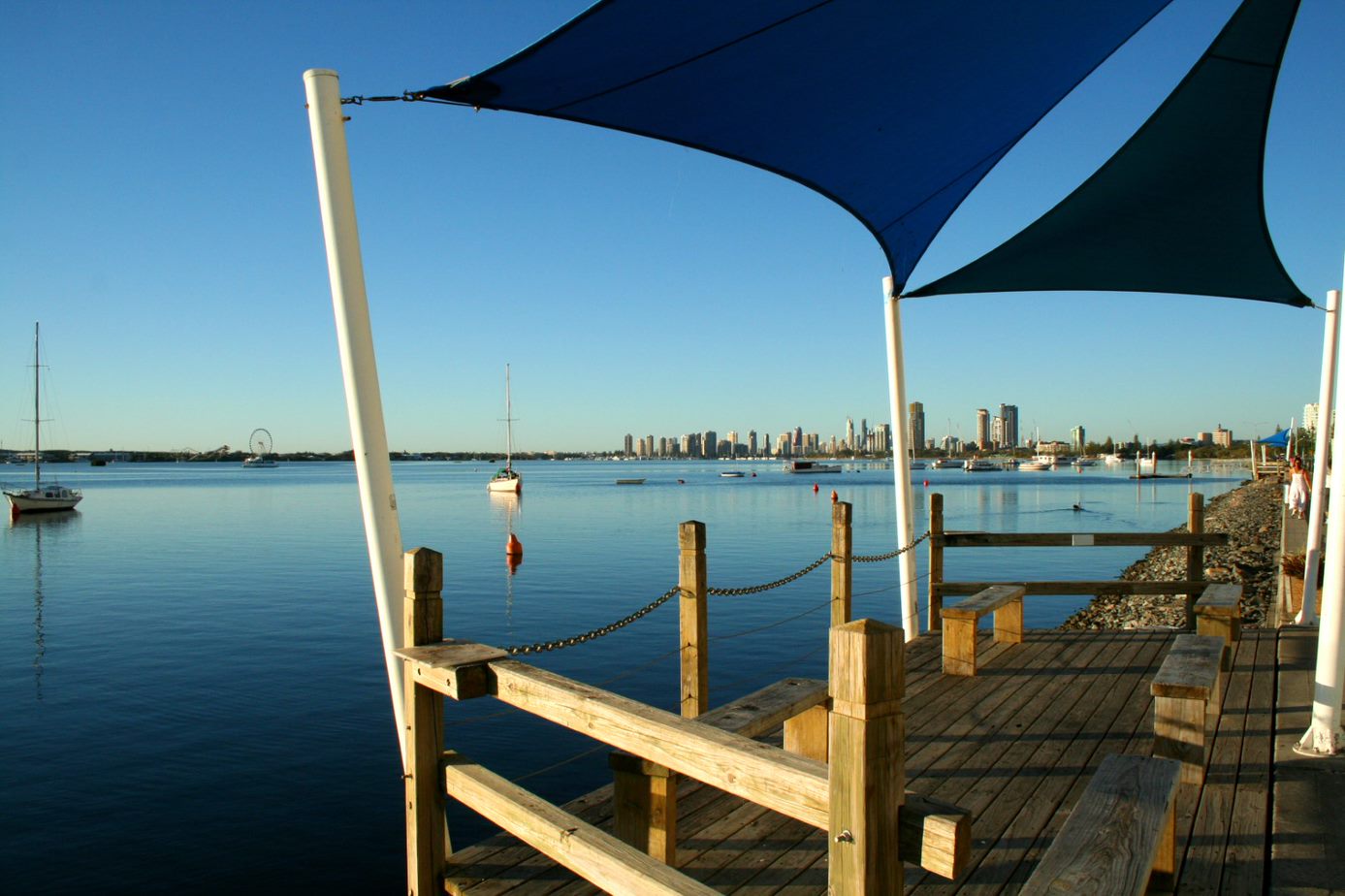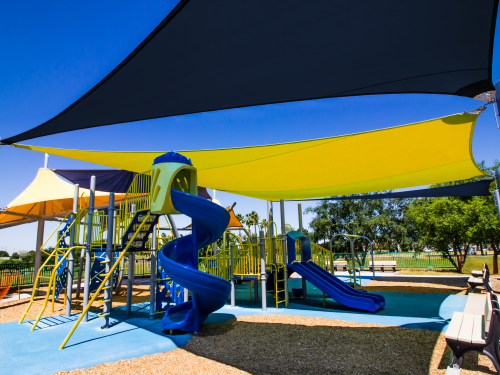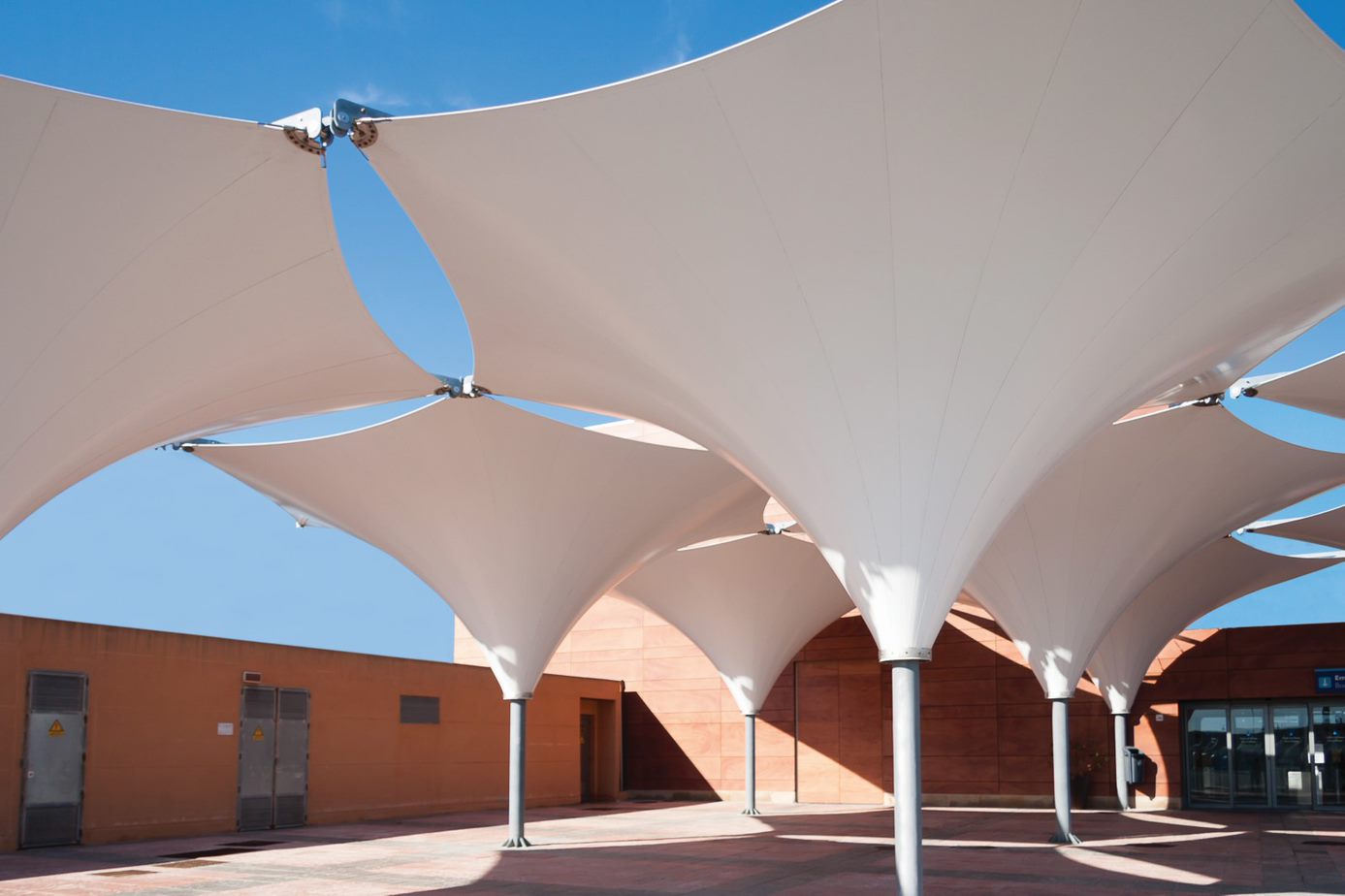Shade sails are everywhere in Australia. They have to be – wherever you find sun, you’ll find the need for shade too!
Whether it’s at home, a business breakout area, a playground or a restaurant, protecting people while they’re outdoors is pivotal to their safety and comfort. But there’s a way to do this correctly and much comes down to the fabric you choose for your shade sail.
Where to begin? Right here, with our article all about shade sails: why you need one, their benefits, and the best shade sail fabrics for different applications.
What are Outdoor Shade Structures (and why do you need one)?
A shade structure is a permanent fixture built to create shade in outdoor locations. Also known as shade sails because they resemble a ship’s sail, they're designed to protect people from the sun, providing an area that is safe when spending extended time outdoors.
Australia has one of the highest rates of skin cancer in the world. Installing outdoor fabric shade sails in a playground, water park, school, cafe or even at home has become an increasingly popular way to help fight this deadly disease.Shade sails protect us from UV radiation and along with other protective measures such as hats, sunscreen and wraparound sunglasses, can provide maximum UV protection when outdoors.
Shade sails can be installed in various configurations, including triangular, rectangular, or custom shapes, depending on space and the desired coverage area. They are usually pulled tightly to prevent sagging and ensure stability in windy conditions.
While shade sail structures protect people from the sun, they can also protect against wind, rain, and even snow! They can also prevent playground equipment or the ground beneath them from becoming hot, faded, or damaged.
Fabric Shade Sail Benefits
Most people think of shade sails and relate them directly to sun protection. While this is the number one factor to consider when installing a shade sail, there are several other benefits that a shade sail can provide.
- Permanent play area: During summer, most of our children love playing outdoors. Installing a shade sail above a playground will provide a solid shade environment, unlike constantly moving trees. This shady area can help children avoid sunburn and sunstroke, all while enjoying the benefits of fresh air and regular outdoor play.
- Weather shelter: The Australian climate is well known for its heat, yet there’s a fair share of the wet stuff, too! Installing a shade sail made from PVC fabric will ensure everyone underneath stays dry. A PVC shade sail is completely waterproof and using this type of outdoor shade sail for walkways and above car parks is a very popular way to get you, guests or employees from A to B and back again without getting wet.
- Floor protection: Whether it’s a patio area, a cafe or an outdoor breakout place for staff, a fabric shade sail can help prevent hazards or damage to the ground underneath. It stops tiled areas or tarmac from becoming slippy, prematurely worn or cracked by sun damage.
- Brighten up your life: Shade sails come in all colours and can completely alter the look and feel of an outdoor space. Whether you want to let the colour pop out or you just want the shade sail to blend into your environment, the choices are endless. Vibrant colours will brighten up your outdoor area, while soft pastel colours can create a peaceful haven and the perfect place to relax.
What Are the Best Fabrics for Shade Sails?
Living in a hot climate, it’s imperative to have plenty of shaded outdoor areas to protect people from the harsh Aussie sun.
If you’re struggling to work out what kind of outdoor covering you need, here are some of the leading high-quality shade sail fabric types suitable for residential and commercial shade structures.

Ferroshade
Ferroshade is made with a knitted HDPE monofilament yarn, giving it optimum strength and durability. It also provides wind resistance, so it’s the perfect option for large-scale commercial shade sails where protection from the elements is necessary.
With no tape yarn, it’s got great UV stability and once installed, it will require very little ongoing maintenance. This makes it great for car parks, playgrounds, swimming pools, sporting areas, schools and all domestic applications like patio shade sails.
Ferroshade comes in 10 high-coverage colours.

Coolshade
Next up is Coolshade, our HDPE monofilament and tape yarn shade cloth. It provides excellent coverage while reducing heat and glare. With its high UVR protection of up to 95%, it’s designed in Australia for Australian conditions.
It’s perfect for small to medium structures such as umbrellas, patio covers and privacy screens, is mould and mildew-resistant and comes in a range of 12 colours.

Bochini
Finally, we have Bochini. This is our type 0 tensile structure fabric. It’s ideal for lightweight tensioned structures such as shade sails, marquees and retractable sunshades for decks.
With a wide colour selection, including a block out white and 4 colours inspired by Colorbond, there is an option to fit any brief. It's hardy and low maintenance with weldable PVDF lacquer on both sides and UV stabilisation.
You’ll also be happy to know that it’s fire retardant and REACH compliant, meaning it’s certified as free of any substances that can impact human health.
11 Steps to Finding the Perfect Shade Sail Fabric
If you’re still unsure which fabric might best suit your needs, follow our straightforward steps below, and you’ll soon find it's plain sailing!
1. What’s your reason for a shade sail?
It’s impossible to determine things like fabric, colour, size and UV protection rating until it’s clear why (and where) your shade sail is bound for. Think about the area where you want to have shade – whether it’s a pool shade cover, shade cloth for a patio or shade sail for a deck - and list your shade sail objectives before you hit the shops.
2. Choosing the right shade cloth colour
Like most fabrics, shade cloth comes in many colour choices. For optimum results, it’s often best to choose a lighter colour, as this will be more effective at reflecting the sun’s heat than darker tones. Ultimately, the choice can depend on aesthetics. Just remember that lighter colours tend to offer you less UV protection.
3. What size shade sail do you need?
Accurately measure the area where you want to install the shade sail before going to the supplier to order your shade cloth. There is a degree of flexibility in shade cloth, but you still need accurate measurements for a perfect fit. If you’re unsure, have a professional do the measurements for you.
4. Different types of shade cloth
Technically, you could use almost any material to create shade, but some fabrics of choice perform better than others. Usually, you’ll want a shade cloth fabric that offers maximum UV protection. The higher the UVP rating, the better the protection against harmful UV rays.
5. Which shade sail fabric is best?
Knitted high-density polyethylene made with a round monofilament yarn is the fabric of choice if you wish to install a product that requires no ongoing maintenance. This fabric offers strong UVR protection and is easy to clean. Another popular option is to install a PVC textile, which serves as a heavy-duty waterproof shade sail ideal in the wide-changing Australian conditions.
6. How long will the shade sail last?
You don’t want to go through the hassle and expense of installing a shade sail that will only last a short while. Quality shade cloth has an average life expectancy of 10 years, so it pays to buy quality fabric. You’ll save money and labour in the long run. A bonus would be to use fabric that comes with a supported warranty.
7. Choosing the shade sail shape
Shade sails can be made in a variety of shapes, with triangular pieces being one of the most common and easiest to install. Having said that, you can opt for squares or rectangles, depending on your specific requirements and the area you want to cover. There’s also no limit to how many shade cloth fabric pieces you decide to use in your shade sail.
8. Think about the weather
If you live in a windy area, this could determine the type of shade sail cloth you ultimately go with. If your area experiences strong, gusty winds regularly, you’ll want to discuss this with your supplier to determine the strongest material and best shade sail setup for your needs.
9. Does the area need to be well lit?
Darker shade cloth will naturally block out more light compared to white or other light colours. Choose a lighter colour if you don’t want your shade to make the area beneath dark and gloomy. Alternatively, you can go dark if allowing natural light is not necessary.
10. Custom-made or off-the-shelf?
You could buy your shade cloth fabric and installation materials off the shelf at one of the big hardware stores if you like, but it might be better to have your shade sail custom-made to the exact dimensions you want. This aspect really depends on your requirements and how specific the size needs to be. If you buy off the shelf to install yourself, knowing about the shade fabric supplied and what features are offered will be the best way to ensure longevity.
11. Find a reputable supplier – like Ricky Richards!
For the best shade cloth, competitive prices and reliable customer service, you’ll want to source a reputable fabric supplier. Ricky Richards has been supplying Australians with high-quality shade cloth and other textiles for decades, so call Ricky and let’s chat about your requirements.